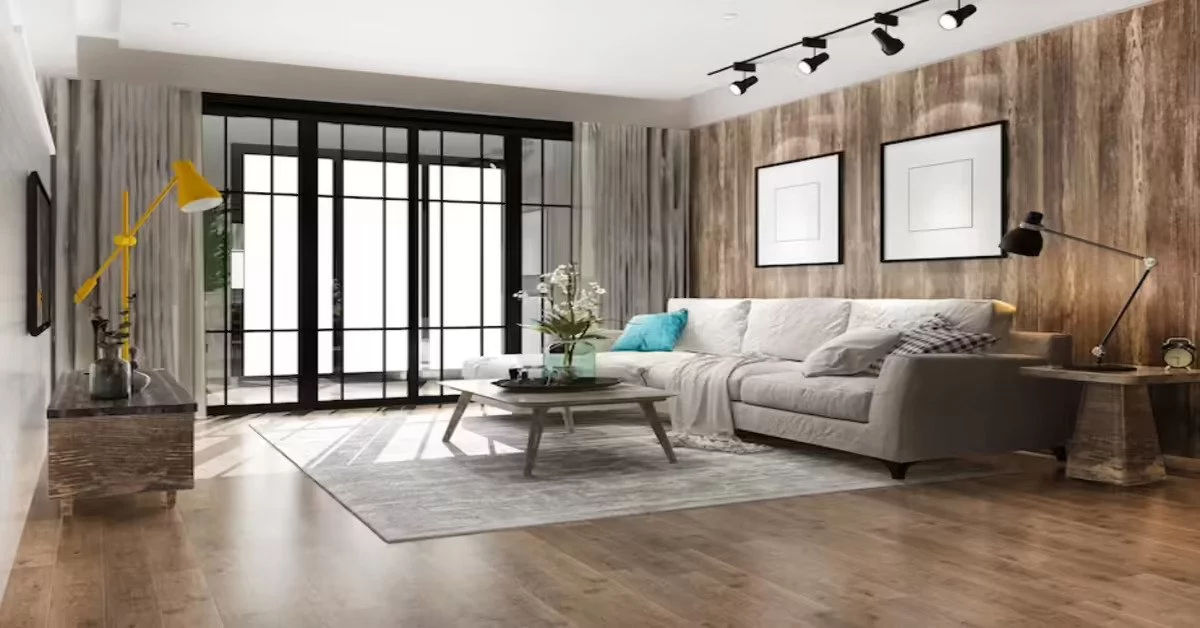Carpentry, an artistry founded on meticulous skill and precision, stands as a testament to the importance of craftsmanship. Among its many facets, wood flooring emerges as a cornerstone in interior design, adding warmth, character, and sophistication to spaces.
In this post, we delve into the realm of wood flooring works, exploring the craftsmanship that elevates these installations from mere floors to stunning focal points within homes and establishments.
Craftsmanship in Carpentry: An Art Requiring Precision
Craftsmanship in carpentry embodies the fusion of skill, experience, and attention to detail. It’s the mark of excellence that transforms raw materials into functional and aesthetically pleasing structures.
The Significance of Wood Flooring in Interior Design
Among the various elements of interior design, wood flooring stands out for its ability to imbue spaces with elegance, warmth, and timeless charm. Beyond functionality, it serves as a canvas upon which entire design themes can be built.
Preview of Covered Topics
This blog post will journey through the world of wood flooring works, encompassing its types, installation techniques, finishing touches, challenges, maintenance, and the craftsmanship inherent in each step.
 Understanding Craftsmanship in Carpentry
Understanding Craftsmanship in Carpentry
Defining Craftsmanship in Carpentry
Craftsmanship in carpentry embodies the mastery of the craft, characterized by an unwavering commitment to excellence. It encapsulates the art of transforming raw wood into functional, aesthetically pleasing structures, such as wood flooring, through refined techniques and expertise.
The Role of Skill, Precision, and Attention to Detail
Skill forms the bedrock of craftsmanship, encompassing not just technical proficiency but also a deep understanding of materials and techniques. Precision is the guiding principle ensuring every cut, joint, and placement aligns flawlessly, creating a seamless finish. Attention to detail, a hallmark of true craftsmanship, involves an acute focus on the finer aspects, whether it’s aligning grains or seamlessly blending different wood pieces.
Emphasizing the Importance of Experience and Expertise
Experience serves as the crucible where skill and precision are honed. Years of working with wood cultivate an intuitive understanding of its properties, allowing craftsmen to anticipate challenges and innovate solutions. Expertise, born from this experience, enables craftsmen to navigate complexities with finesse, ensuring each wood flooring project is a testament to their mastery.
Craftsmanship in carpentry, especially in the realm of wood flooring works, embodies a fusion of technical prowess and artistic finesse. It’s the silent language spoken through meticulously laid planks, showcasing the culmination of skills, precision, and a wealth of experience possessed by the craftsmen behind each stunning installation.
Exploring Wood Flooring
Types of Wood Commonly Used in Flooring
Wood flooring offers a diverse range of species, each with its distinct characteristics. Oak, revered for its durability and rich grain patterns, remains a popular choice. Maple, known for its light hue and fine texture, adds a sense of brightness to spaces. Walnut, with its deep, luxurious tones, brings an air of sophistication.
Pros and Cons of Different Wood Species for Flooring
Oak: Widely favored for its durability, it stands strong against wear and tear. However, it might be prone to scratches.
Maple: Resistant to abrasion and indentation, it’s ideal for high-traffic areas. However, it might be susceptible to moisture.
Walnut: Its exquisite appearance adds elegance, but it might be softer and less resistant to scratches.
Each wood species presents a unique blend of strengths and considerations, allowing homeowners to choose based on both aesthetic preferences and practical requirements.
Different Styles and Patterns of Wood Flooring
Parquet: This intricate pattern comprises smaller wood pieces arranged in geometric designs, adding a touch of sophistication and visual interest.
Plank: The classic and timeless style involves long, wide boards laid parallelly, creating a seamless, traditional look.
Herringbone: Composed of rectangular pieces arranged in a zigzag pattern, herringbone adds an element of luxury and character to floors.
These styles and patterns in wood flooring works serve as a canvas for creativity, enabling homeowners and designers to infuse spaces with their desired aesthetic.
The realm of wood flooring is an expansive landscape offering an array of wood species, each with its unique charm, and styles that allow for artistic expression. Choosing the perfect combination of wood type and style empowers individuals to craft spaces that resonate with their personality and lifestyle.
The Art of Wood Flooring Installation
Preparation Phase: Measuring, Planning, and Assessing the Area
Before the first plank is laid, meticulous planning takes center stage. Accurate measurements and assessments of the area ensure a seamless installation process. This phase involves evaluating subfloor conditions, assessing moisture levels, and planning the layout to optimize the aesthetic appeal and functionality of the flooring.
Tools and Techniques Used in Wood Flooring Installation
- Tools: Essential tools like nail guns, saws, moisture meters, and leveling instruments are wielded by skilled craftsmen to ensure precision and efficiency.
- Techniques: Various installation methods such as nail-down, glue-down, or floating installations are employed based on the type of wood flooring and the subfloor conditions. Each technique demands expertise to ensure a flawless finish.
Highlighting the Importance of Proper Installation for Longevity
Proper installation isn’t just about immediate aesthetics; it’s the key to longevity and durability. A well-installed wood floor minimizes issues such as warping, gaps, or squeaks, ensuring its resilience against daily wear and tear. Additionally, precise installation guarantees that the floor can withstand changes in temperature and humidity, maintaining its structural integrity over time.
The artistry of wood flooring installation lies in the meticulous attention to detail during the preparation phase, the finesse in using specialized tools and techniques, and the unwavering commitment to precision. Each plank laid is a testament to the craftsmanship behind every step taken in the installation process.
Finishing and Refinishing
Importance of Finishing in Wood Flooring
The application of finishes such as staining, sealing, and protective coatings serves as a shield, safeguarding the wood against moisture, scratches, and stains. Beyond protection, finishes bring out the natural beauty of the wood, enhancing its color, grain, and texture. This process not only augments the aesthetics but also prolongs the lifespan of the flooring.
Techniques for Refinishing Existing Wood Floors
Refinishing existing wood floors involves a series of steps to revitalize worn-out surfaces. This includes sanding to remove previous finishes, repairing any damages, applying new stains or finishes, and finally sealing the surface. Skilled craftsmen employ specialized tools and techniques to ensure a seamless restoration process without compromising the integrity of the wood.
Discussing How Proper Finishing Enhances Overall Aesthetics and Durability
Proper finishing isn’t merely a superficial layer; it’s a transformative process that brings out the innate beauty of the wood while fortifying it against environmental elements and daily use. The enhancement of aesthetics through proper finishing adds depth and richness to the wood, elevating the entire ambiance of a space. Furthermore, it significantly contributes to the longevity of the flooring by protecting it from wear and tear.
The artistry in wood flooring works extends beyond the installation phase into the realm of finishing and refinishing. These processes not only contribute to the visual appeal of the flooring but also ensure its resilience and durability, making each step an integral part of the craftsmanship behind wood flooring.
Challenges and Solutions in Wood Flooring
Common Challenges Faced During Wood Flooring Projects
- Moisture Management: Ensuring optimal moisture levels in the subfloor to prevent warping or cupping of the wood.
- Subfloor Imperfections: Dealing with uneven surfaces or subfloor irregularities that may affect the installation process.
- Acclimation of Wood: Allowing the wood to acclimate to the environment to prevent expansion or contraction post-installation.
- Precision in Cuts and Joints: Achieving seamless joints and cuts, especially in intricate patterns like herringbone or parquet.
Solutions and Tips for Overcoming These Challenges
- Moisture Control: Utilizing moisture barriers, proper sealing, and humidity control measures.
- Subfloor Preparation: Addressing imperfections through leveling compounds or repairs before installation.
- Wood Acclimation: Allowing the wood to acclimate in the installation space for an adequate duration before installation.
- Precision Techniques: Employing specialized tools and taking meticulous measurements to ensure accuracy.
Importance of Adaptability and Problem-Solving in Carpentry
Adaptability is the cornerstone of successful wood flooring works. Carpentry isn’t just about following a set process; it’s about dynamically addressing unforeseen challenges that arise during a project. Problem-solving skills allow craftsmen to innovate solutions on-site, ensuring that each challenge becomes an opportunity for creativity and excellence.
Mastering wood flooring works isn’t just about technical expertise; it’s about a mindset of adaptability and problem-solving. The ability to navigate challenges, armed with knowledge and solutions, defines the craftsmanship that goes into creating impeccable wood flooring.
Maintaining Wood Flooring
Tips for Maintaining and Caring for Wood Floors
- Regular Cleaning: Sweep or vacuum frequently to remove dust and debris that could scratch the surface.
- Gentle Mopping: Use a damp mop with a mild cleaning solution specifically designed for wood floors.
- Protective Pads: Place protective pads under furniture legs to prevent scratches.
- Avoid Moisture: Wipe spills immediately to prevent water damage or staining.
- Recoat or Refinish: Periodically recoat or refinish the floors to maintain their luster and protection.
 Discussing the Importance of Regular Upkeep and Preventive Measures
Discussing the Importance of Regular Upkeep and Preventive Measures
Regular upkeep isn’t just about preserving the appearance of wood flooring; it’s about safeguarding its structural integrity. Consistent care prevents scratches, wear, and moisture damage that can compromise the wood’s surface and structure over time. Moreover, preventive measures like using rugs in high-traffic areas or applying protective coatings act as proactive shields against potential damage.
How Proper Maintenance Prolongs the Life of Wood Flooring
Proper maintenance isn’t merely a maintenance routine; it’s a lifeline for wood flooring. Regular care ensures that the flooring retains its beauty, resists wear, and sustains its structural integrity. By addressing minor issues promptly and consistently caring for the flooring, its lifespan can be significantly extended, sparing homeowners from premature replacements or costly repairs.
Maintaining wood flooring isn’t just about preserving its appearance; it’s a commitment to its longevity and resilience. Through regular care, preventive measures, and timely maintenance, the timeless elegance and durability of wood flooring can be sustained, turning each step on these floors into a testament to the craftsmanship behind wood flooring works.
Conclusion
In the realm of interior design, wood flooring stands as an enduring symbol of sophistication, warmth, and craftsmanship. From the meticulous selection of wood species to the intricate installation process and the ongoing care that sustains its allure, wood flooring works embody a timeless elegance that transforms spaces into inviting sanctuaries.
Craftsmanship in wood flooring isn’t merely about the artistry of installation or the finesse of finishing touches; it’s a symphony of skills, precision, and dedication. The craftsmanship shines through every plank, weaving a story of expertise and commitment to excellence.
Exploring the world of wood flooring works reveals not only the diverse array of wood species and styles but also the challenges and solutions inherent in the process. Challenges such as moisture management, subfloor imperfections, or achieving precision cuts are met with adaptability and problem-solving, further amplifying the craftsmanship involved.
Moreover, the significance of maintenance cannot be overstated. Regular care, preventive measures, and timely upkeep are the pillars that sustain the beauty and durability of wood flooring. Proper maintenance isn’t just about aesthetics; it’s the key to prolonging the life of these exquisite installations.
As we conclude this exploration into wood flooring works, it’s essential to recognize that each plank laid represents more than just a surface; it encapsulates the dedication, expertise, and passion of craftsmen dedicated to creating spaces that exude timeless charm and sophistication.
Craftsmanship in wood flooring works isn’t just a profession; it’s an art form that elevates ordinary spaces into extraordinary sanctuaries, inviting individuals to walk upon floors that whisper tales of expertise and enduring beauty.







